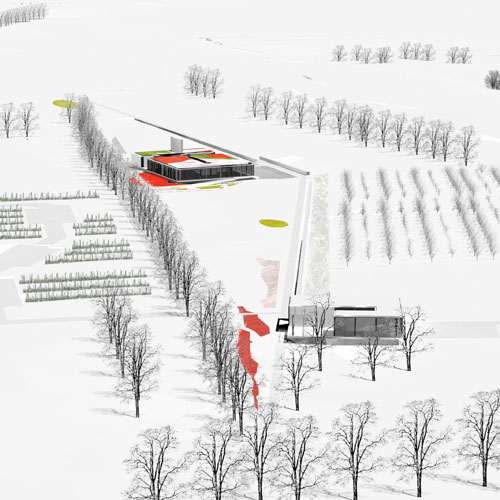| |
Studio Associato Bernardo Secchi Paola Viganò
Architecture | Urbanism | Landscape |
| new crematorium in Leuven - international competition
|
| client: |
city of Leuven |
| program: |
service |
| date: |
2006 |
| |
|
| consultant: |
|
| team: |
studio
S.Bodria, A.Calò, A.Carlesso,U.degli Uberti, T.Fait, G.Lambrechts, C.Nitti, S.Peluso, G.Pusch, K.Yoshida
|
| |
|
| |
|
| |
|
| |
|
| |
|
| |
|
| |
|
| |
|
| |
|
| |
|
| |
|
The Hofheide site in Holsbeek is extremely beautiful. The competition notice underlines the main elements of its articulated landscape, where topography, vegetation evolution and the legacy of a long history left many traces: the soft rising hill flank, the view of Mostingbos, the counter-light perspective of the ridge.
Hofheide needs a careful and detailed understanding: the understanding coming out of a physical experience of the site and of the projection on the site of the different practices that the construction of a crematurium may introduce.
The project of the crematorium we propose tries to interpret and valorise the Hofheide scape through four main concepts:
1. the triangulation of the vast space by three objects whose position is the result of the reading of topography and of the understanding of the nature of the soils.
2. the definition of an open interior: the heide garden as the core of the crematorium space where the slope finds a suspension and the rows of trees define a green room. There the view is limited and concentrated.
3. the intense participation of the building to the garden design; the hofheide garden is made of mineral and vegetal elements that intersect each other and enrich themselves reciprocally.
4. the integration of the cultivated land in the project by the use of agricultural materials as a strategy of incremental construction of the future park. |
|

![]()